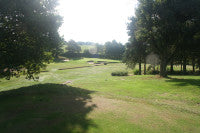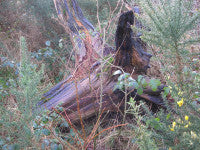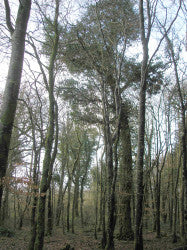Tree Selection on Golf Courses
 Many golf clubs carry out extensive tree planting to improve the aesthetic appeal of the course, define its character and encourage wildlife.
Many golf clubs carry out extensive tree planting to improve the aesthetic appeal of the course, define its character and encourage wildlife.
Mary Purcell looks at the selection process and offers a few pointers on species and management
When a golf course superintendent begins the process of tree selection, he or she is presented with hundreds of species from around the world to choose from and the decision can, therefore, be very a difficult one.
Probably the two most important components of planting trees on the course are tree species and location. Both of these issues must be carefully researched prior to work beginning. Many people forget to get a clear understanding of the needs of the tree, predicted life expectancy and likely size at different times of its life.
For instance, there is little point in placing a tree that has a short life expectancy and limited height among large parkland trees. and expecting miracles.
Trees should be carefully selected with both management and playability in mind. Coupled with this, it is important to select native trees where possible. There are numerous benefits of planting native trees including:
• Possible reduction in nutrient and irrigation requirements
• Natural resistance to diseases
• Likely higher biodiversity compared to non-native species
• Greater ecological value
Naturalised trees differ from native in that they are not native to the country, but were brought to the country hundreds of years ago and have prospered here ever since. However, at present, much of our native woodlands are under threat from non-native trees and shrubs.
Properly selected and positioned trees will perform five functions including architectural, environmental, aesthetic, economic and safety. These functions combined can:
• Indicate the line of play and define targets such as greens

• Define course fairways from one another
• Provide reference points for both the length of shots and wayward shots
• Add character and beauty to the course
• Seclude the course from the outside world
• Add definition to the course
• Provide wind breaks and shaded locations
• Act as wildlife habitats
• Marketing feature to attract golfers
• Protect players from errant shots
Tree selection depends upon numerous characteristics including:
Tree Height and Shape
The final height of a tree plays a huge role in dictating the appropriate tree for your course. Large parkland trees can add a sense of elegance to a course and are often used in situations for a focal point. Some courses even use such trees in the centre of fairways to add to the difficulty of the course. Large style trees such as oak are beneficial in areas where shade is required.
The shape of the tree crown can vary dramatically from narrow, upright trees such as birch to broad trees such as oak and beech. Narrow trees are useful screens and shelter belts, with many species growing rapidly. Weeping forms of trees such as weeping ash and willow have begun to increase in popularity. Such trees are very distinctive and are absolutely magnificent if placed in the correct location, particularly as a specimen tree.
Foliage Type
Trees can be classed as either evergreen or deciduous. In many instances, deciduous trees are been planted in 'out of play' areas. Evergreen trees, which retain their leaves during the winter, are often placed in conjunction with deciduous trees as a means of giving all year round colour. Evergreens are often used as wind breaks.
Rooting
Golf courses depend on having excellent quality grass. Trees with large protruding root masses are rarely planted near high maintenance turf areas, particularly greens, since the roots will compete with the grass for nutrients and water, leading to grass thinning and poor quality playing conditions. Coupled with this, certain trees such as elm, maple and willow have roots which can appear partly above ground, damaging paths and surrounding surfaces.

Longevity
The life expectancy of trees varies dramatically from about 20 years for some of the Prunus spp. to over a hundred years for Quercus spp. Trees with shorter longevity are frequently used to fill spaces while trees with longer longevity are becoming established. In many instances, trees that are expected to last for many years are carefully selected for specific sites of interest and as vocal points that, as the tree matures, will grow in importance and impressiveness. Many courses have a number of signature trees which are often over a hundred years old.
Planned location
Foresight is required when deciding on tree planting locations, since the trees will likely be present for several decades if left to grow unhindered. It is pivotal that the selected species blend in with the surrounding area, paying attention to how the trees will look in future years.
Tree planting around golf greens should be carried out taking into consideration the position of the morning sun and also how shade will be cast. Morning sun is essential to ensure good turfgrass health and it is very difficult to maintain highly performing golf greens without it.
Trees located anywhere on the course are beautiful, yet poor planting operations can lead to numerous problems as the trees mature, including:
• Poor air circulation
• Tight fairways
• Overly penalising course
• Excessive shading cast on fairways, greens and tees
Tree Planting
Several tree sizes are available to the turfgrass manager, including transplants (approximately 6" to 24" in height), whips (approximately 20" to 36" in height) and standards that vary greatly in height and girth. In many situations, where mass plantings are planned then transplants or whips are chosen, due to their relatively low cost. Management issues of these young trees can be difficult, particularly in areas where grass growth is expected to be vigorous.
Standards are frequently chosen along course perimeters or in high visibility areas such as between fairways. Root-balled trees are usually only chosen for specific locations where instant impact is desired.
Deciduous trees are usually planted from late October until January. In recent years, planting has been delayed until November since, with the mild weather, trees have been actively growing later than previous years. The concept behind transplanting deciduous trees is to plant them between autumn leaf fall and spring leaf growth. Once the tree roots are in the soil, some root initiation will occur while soil temperatures are still relatively warm.
Evergreen trees are often planted around the same time as deciduous.
Planting transplants and whips is relatively straight forward, however bare root standards require careful attention including a well dug hole, base manure, and staking. Several staking methods can be employed and most are suitable, so long as the tree is well supported and the tie used to secure the tree to the stake is non abrasive.
After trees have been planted, some nutrients will need to be applied each year in order for the tree to maintain health. A balanced tree fertiliser at a relatively low rate is recommended. Standard trees will need to be watered for the first couple of years after sowing on a regular basis during summer months.
Tree Management
When one thinks about trees, it is almost impossible to fully grasp their importance for wildlife. It is true that we all have an idea that many animals live in or feed from living trees, however many do not realise that dead/decaying trees are also vital to wildlife. Tree snags are described as dead or decaying trees in various stages of decay.
These snags are vital habitats for hundreds of animals and insects. Bats and frogs make their homes in crevasses.
Invertebrate communities thrive in decaying trees and help return nutrients back to the soil as do mosses and fungi. Course superintendents need to understand the importance of not disturbing these decaying trees.
The creation of woodland edges, with well selected broken shrubs, helps to screen untidy woodland and also helps to reduce the sharp line between grass and woodland.
How to prevent tree forking
In some situations, tree forking is acceptable, however, in locations where trees, in particular parkland style trees, are planted as features, it is vitally important that the trees grow tall and relatively straight. This can be managed by shaping the tree when young in order to maintain a strong, straight leader. Correcting a forking issue with a tree involves removing the weaker side of the fork leaving the tree with a dominant leader. In some instances, more than one branch may need to be removed and may need to be carried out over a number of years.
When shaping a tree, the cut should be made outside the branch collar, so that a large stub does not remain after cutting. The correct time for carrying out shaping varies among tree species.
Some damage to young trees can occur due to animals. In most situations this will not be a huge problem, however, damage to specimen trees planted in strategic locations may warrant action. Damage from bark stripping or nibbling from animals such as rabbits, hares and deer is commonplace and tree guards may be required.
Tree Survey

I have often found it very useful if a tree survey is carried out on a golf course that is planning to plant trees or remove existing trees. The survey will analyse the existing trees and shrubs on the course and hopefully give a greater understanding as to exactly what is growing on the course. It will also give a description of the trees including tree size, likely age, and condition.
The superintendent can use this material to develop a management programme for the course, including selective removal of dangerous and, if required, non native trees. New plantings can then be decided from the current tree species on the course in order to best match the new with the old.
There is no doubting that trees add to the beauty and character of any course yet, in many situations, some older golf courses are involved in tree removal as opposed to tree planting. This is often due to poor planning at the planting stage, which led to the placement of trees in the wrong locations. In my opinion, trees are vital to most courses but, in order to avoid serious management problems in the future, careful planning by an experienced agronomist is required before extensive planting is carried out on a new or existing course.
About the author: Mary Purcell is carrying out research for a doctorate degree in Environmental Science at University College Dublin. For more information contact Mary at mary.purcell@ucd.ie
Article Tags:
Golf